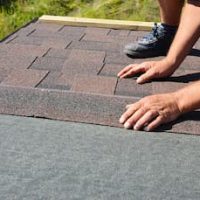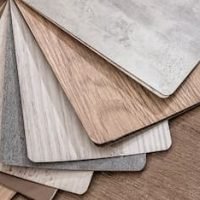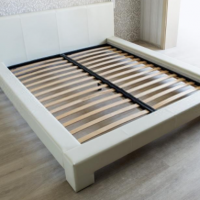Can You Use Frontier Natural Hardwood Lump Charcoal As Biochar? Biochar is carbon-rich material produced by the process of pyrolysis. It is the decomposition of biomass used to enhance the quality of the soil. It is natural charcoal that is made of charring wood.
When volatile gases remove from the wood, it will be biochar used to hold nutrients and water for plant nutrition. The lump wood charcoal is somehow similar to biochar to some factors.
Can You Use Frontier Natural Hardwood Lump Charcoal As Biochar?
Yes, the BBQ charcoal is used as biochar. However, make sure that the charcoal is lump charcoal not pressed briquettes charcoal. Because it is harmful to the climate and environment. The lump hardwood charcoal fulfills the needs of biochar smoothly and safely.
You need to be careful while buying charcoal.
What do I use In My Garden For Plant Nourishment?
I use and recommend Everdure All Natural Lump Charcoal
It is BBQ charcoal for grilling because it reaches a high temperature quickly. I use it for grilling in BBQ parties and the remaining ash is used for gardening. It is highly effective and does not cause much change in the environment.
Why do I like This Everdure All Natural Lump Charcoal?
- It is porous and allows water and nutrients to hold smoothly.
- The porous surface is best for microorganisms to take in and out of the ground.
- The potassium content act as a soil conditioner
- The use of charcoal will further develop PH BALANCE
Contingent upon the sort of plants you are developing, the dirt should be in a particular pH range. BBQ debris is able for expanding the alkalinity of the soil rapidly since the debris is water-solvent. Conversely, limestone requires a half year or more to change the pH.
- Pest Control
BBQ debris contains salt, which assists kill bugs with loving snails, slugs, and different sorts of spineless creatures. Sprinkle the debris around the foundation of the impacted plants. If the debris gets wet while watering the plants, you want to reapply the debris as water washes off the vital salt.
- Loaded With Minerals
Debris contains other minor components that are fundamental for the development of plants.
For the most part, the debris contains 25 to 45% calcium carbonate – a typical liming specialist for plants. Liming specialists further develop plant development and increment the bacterial movement of soil.
Different minerals found in the debris are phosphorus, aluminum, magnesium, and sodium. Bar-b-que debris additionally incorporates miniature supplements like boron, copper, molybdenum, and zinc.
- Weed Suppression
In the perfect sums, BBQ debris smothers weeds in your nursery. It helps increment the alkalinity of the dirt and assimilates poisons from the dirt.
- Encourages The Growth Of Clover
Debris makes clover development simpler. Clover plants are vital to the climate since they give nectar to the honey bees that, thus, assume an essential part in fertilization.
Things That I Don’t Like About Everdure All Natural Lump Charcoal
Honestly, it is one of the best options for high-yield production. Bioenergy has positive impacts on harvested fields.
I didn’t find any issue. However, you are careful while using it. The gas emissions may produce a harmful global effect.
How Much Cost Of It?
If you use coal at home, you do not need to waste money purchasing specific charcoal for bio-energy. If you plan the practice of charcoal and want to buy it
What Is the Difference Between Lump Charcoal And Biochar?
The use of natural charcoal is safe for the environment. Using charcoal instead of biochar needs much care. You need to know the difference between them for proper use.
Charcoal
.A great deal of charcoal is produced using tropical hardwoods like maple in a contaminating interaction. They go into the rainforest, slash down trees, put them in a heap, cover them with soil, then set the land.
It makes enormous smoke mists which generally contain (methane is 25x more strong than CO2 as an ozone harming substance).
If you google how to make charcoal, you will probably tell to gather wood, heap it in a hill, cover it with soil or greenery and set it on land. Or then again, you’ll be guided to make a furnace from an oil drum. In the two cases, smoke is delivered and is permitted to deliver into the air.
Present-day charcoal makers need to erupt off this smoke by setting it ablaze utilizing a gaseous petrol-fueled pilot fire. It transforms the methane into CO2 decreasing its intensity as an ozone-depleting substance.
It is feasible to consolidate the smoke and make wood vinegar However, not many individuals are doing this.
Biochar
The makers use pyrolysis furnaces which use the smoke to control the cycle while making carbon impartial hotness. No methane is being created, making the interaction carbon negative. Smoke is combustible, so by allowing it to contaminate the planet you’re discarding helpful fuel.
Pyrolysis signifies ‘division by fire’, and during pyrolysis, every compound in the wood (sap, fats, starches, and so on) is driven off by the fieriness of burning.
What’s left behind is the carbon design of wood, including the xylem and phloem structures which were liable for shipping water and supplements all over the plant. During pyrolysis, half of the carbon is set free from the wood and half the remaining parts as the carbon structure.
Can You Use Frontier Natural Hardwood Lump Charcoal As Biochar-Final Thoughts
The wood biomass will be used for bio energies and plants nutritions. Increase the yield and quality of your garden by utilizing biomass.
The toxic gas is eliminated from wood and helps to make the surface porous. The biomass is used for many purposes for indoor and outdoor gardening.
Before using any product, you will need to take care of all environmental factors to avoid any harmful effects. The use of lump charcoal as biomass is safe and secure. Use wood and charcoal for best and long-lasting results that remain effective for years.
Charcoal Composition and Chemicals
Contents







